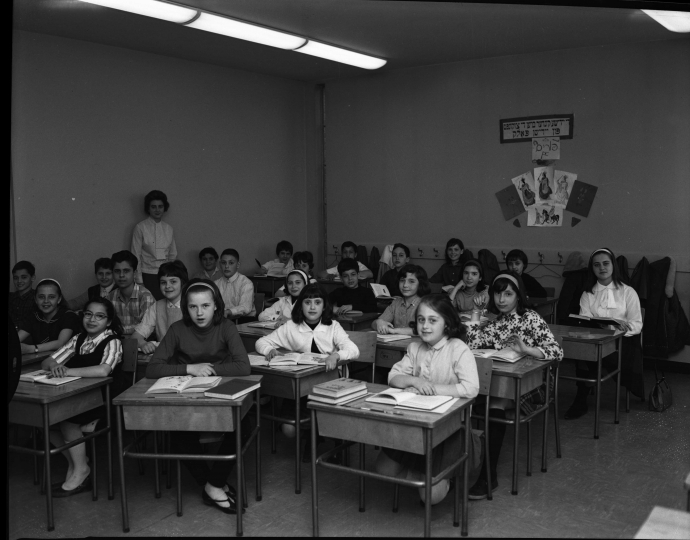This past spring the OJA went to school!
Over the course of several months, and working with three capable museum studies students from the University of Toronto’s iSchool, the OJA has developed a curriculum resource guide that brings the archives into the classroom. The project was born from a 2016 program that the OJA piloted with Bialik Hebrew Day School’s grade seven and eight students. That program drew on the content in the OJA’s exhibition Benjamin Brown: Architect. This year, Bialik again agreed to partner with the OJA, using a new resource guide focused on the history of Jewish Youth in Toronto from 1910 to 1950.
The OJA’s new guide uses archive-based learning as a way of understanding the social, political, and cultural history of the Jewish community in Toronto. So what is archives-based learning? Put simply, archives-based learning is a successful pedagogic method that uses primary sources to encourage students to think critically, consider multiple viewpoints and perspectives, form reasoned conclusions based on facts and evidence, and understand their role in history-making. By using primary sources as a point of inquiry, students are provided with an unfiltered and first-hand account of the people, places and events under study. Focusing on the experiences of youth during this formative period in Toronto’s Jewish history further allows students the opportunity to make connections between the historical experiences of children and youth and their current-day lives. The OJA’s resource guide is tied to the Ontario Ministry of Education curriculum expectations. It allows the content to be taught as a whole unit of learning or as four individual lessons.
Piloted with the grade seven students in the Masoret program at Bialik, the teacher chose to implement three out of the four lessons over a period of several weeks. The first lesson included a visit from an OJA archivist who gave a presentation outlining the role of an archive, what kinds of records are stored at the OJA, what archivists do, and more. She then conducted a visual literacy activity with the students, instructing them on how to read an historical photograph, extract information and draw conclusions. The students had a lot of fun trying to figure out what was documented in photos created many decades before they were born. Even trying to figure out the date a photo was taken became an investigative challenge!
The students then participated in the OJA’s Stories of Spadina walking tour of Kensington Market, which provided them with further historical context within the geographic space occupied by much of Toronto’s Jewish community during the period under study. Students were encouraged to think about how youth may have lived in and moved through the market during the first half of the twentieth century.
A series of in-class activities followed that related to six distinct themes: home life; education, religion, work life, community involvement, and sports and leisure. The OJA guide provided content overviews for these six themes, supplementary readings, step-by-step lesson plans, teacher prompts, and of course, the primary sources used by the students to complete their assignments.
The Bialik students emerged from the experience with a better understanding of the local Jewish past as well as the challenges and opportunities that Jewish children and youth may have faced growing up in Toronto's Kensington Market. They learned how to read a primary source and how to think critically about its content and context of creation.
If you are an educator and would like to introduce archives into your classroom, please be in touch with the OJA at www.ojainquiries@ujafed.org.
